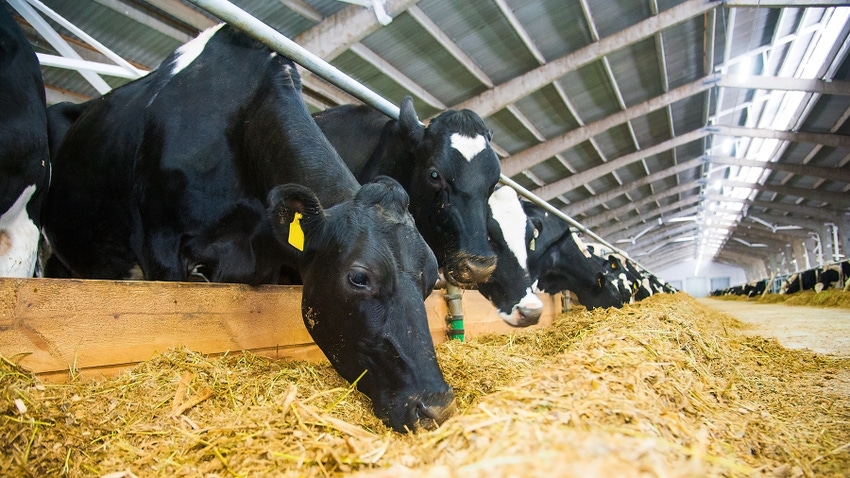
Veterinarians were scratching their heads the past few weeks trying to identify a mystery disease affecting dairy cattle in Kansas, New Mexico and Texas. The U.S. Department of Agriculture and the U.S. Food and Drug Administration confirmed the disease as highly pathogenic avian influenza, commonly known as bird flu.
Dr. Mike Brouk, Kansas State University Extension Dairy Specialist, explained at the Kansas Dairy Association meeting March 22 that the death loss is very low and it doesn’t impact all cows in the herd. “The highest percentage affected in the herd I've seen is about 20% of the animals impacted, lowest is 5%," Brouk explained.
Multiple states' departments of agriculture, universities and animal health professionals are working together to conduct tests on samples gathered from infected cattle, and collecting as much data as possible from affected dairies to try to nail down a vector or transmission means for the illness.
As of March 25, unpasteurized milk samples confirmed HPAI cases on one dairy farm in Kansas and two dairy farms in Texas. Similar cases in New Mexico have not been confirmed as HPAI at this time.
HPAI symptoms in dairy cows
Cattle infected with avian influenza can exhibit flu-like symptoms. Brouk said the symptoms first emerge when animals refuse feed and show signs of digestive upset. The cows with the most severe symptoms experience fever and a severe drop in milk production. Animals in their second lactation or greater seem to be the animals most impacted.
Economic impacts are ongoing, and herds may lose up to 40% of their milk production for a week to 10 days until symptoms subside. It is vital that dairy facilities nationwide practice heightened biosecurity measures to mitigate further spread.
“Unlike affected poultry, I foresee there will be no need to depopulate dairy herds,” Texas Agriculture Commissioner Sid Miller said. “Cattle are expected to fully recover. The Texas Department of Agriculture is committed to providing unwavering support to our dairy industry.”
Texas dairies are strongly advised to use all standard biosecurity measures including restricting access to essential personnel only, disinfecting all vehicles entering and leaving premises, isolating affected cattle and destroying all contaminated milk.
Additionally, it is important to clean and disinfect all livestock watering devices and isolate drinking water where it might be contaminated by waterfowl. USDA has confirmed that affected dairy cows do not appear to be transmitting the virus to other cattle within the same herd.
Farmers are asked to notify their herd veterinarian if they suspect any cattle within their herd are displaying symptoms of this condition.
Dairy products still safe for consumption
At this stage, USDA confirms there is no concern about the safety of the commercial milk supply or that this circumstance poses a risk to consumer health. Milk from impacted animals is being destroyed so that it does not enter the food supply.
In addition, pasteurization is required for any milk entering interstate commerce. Pasteurization has continually proven to inactivate bacteria and viruses, like influenza, in milk.
Based on findings from Texas, the detections appear to have been introduced by wild birds. Initial testing by the National Veterinary Services Laboratories has not found changes to the virus that would make it more transmissible to humans, which would indicate that the current risk to the public remains low.
The National Cattlemen's Beef Association notes that HPAI has not yet been detected in beef cattle.
Can HPAI infect other animals?
Although avian influenza mainly infect and spread among migratory birds and domestic poultry, the virus can spread to other animals. Animal and Plant Health Inspection Service has been tracking the virus in mammalian wildlife for years. Bird flu viruses sometimes infect mammals that eat birds or poultry, such as bears, foxes, skunks, cats, dogs and zoo animals.
Just last week, a young goat tested positive on a farm in Minnesota where a poultry flock was depopulated after an outbreak earlier this year. The Minnesota Board of Animal Health quarantined all other animals on that farm.
Minnesota state veterinarian Brian Hoefs said this case highlights the possibility of the virus infecting other animals on farms with multiple species. “Thankfully, research to-date has shown mammals appear to be dead-end hosts, which means they’re unlikely to spread HPAI further,” Hoefs explained.
About the Author(s)
You May Also Like






